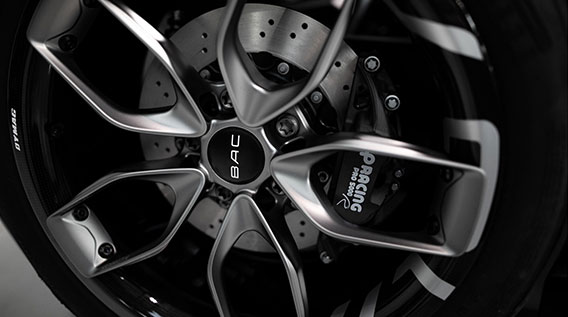Thanks to generative design, new wheels are 35% lighter than previous versions
With a weight of only 2.2 kilograms (4,8 lbs), BAC produced a wheel that was an impressive 35% lighter than the previous version, and could be manufactured traditionally on a CNC mill. But even more important, the new wheel is not just lighter but also met the structural requirements for approval and certification in Europe.
